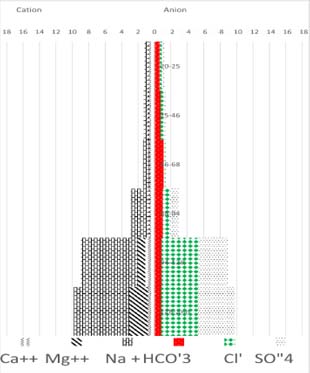The post-amelioration status of the dark-chestnut soil in rice crop rotation
DOI:
https://doi.org/10.31251/pos.v8i3.328Keywords:
Rostov region; Proletarskaya irrigation system; dark chestnut soil; post-ameliorative status; carbonation; gypsum formation; solonetzization.Abstract
The aim of the study. To identify changes in the condition and properties of the dark chestnut soil in the area of the Proletarskaya irrigation system after the rice irrigation was ceased in 2003.
Location and time of the study. Rostov region, Proletarskaya irrigation system. The studies were conducted in 2002 and in 2023–2024.
Methods. Morphometric examination of soil profiles, i.e. thickness measurement and genetic horizons description, were performed in the field. The following soil properties were determined in the collected soil samples: pH of aqueous suspension, carbonates and organic matter content, exchangeable sodium, calcium and magnesium content, as well as the content of gypsum sulfates.
Results. Changes in the morphology and chemical composition of dark chestnut soil on which rice crop rotation was ceased in 2003 were revealed. Since then, the soil was used for cultivating field crops without irrigation. The change in the water regime from irrigation-leaching to desiccation-exudative led to the formation of a soil layer enriched in magnesium and sodium sulfates, as well as gypsum, in the lower part of the profile. Carbonation of the soil profile was proven by both a significant increase in the carbonate content throughout the profile and the presence of a horizon with clusters of large carbonate clots. Gypsum appeared in the form of large druse at the depth of 90–130 cm, whereas in the soil of the fallow area, small gypsum crystals were visible throughout the profile, indicating the gypsum formation process caused by the increased sulfate content of the groundwater lying close to the surface. In the lower part of the dark chestnut soil profiles in both areas, weak solonetzization was diagnosed, and in the soil of the former rice crop rotation there was a high degree of sulfate salinity.
Conclusion. The change from the irrigation-leaching type of water regime to the desiccation-exudative type under the semi-arid climate, provided that the groundwater of hydrocarbonate-sulphate composition is close to the surface, is accompanied by carbonation, gypsum formation, weak solonetzization and deep salinization of the soil profile of dark chestnut soils.
Downloads

Downloads
Published
How to Cite
Issue
Section
License
Copyright (c) 2025 The Journal of Soils and Environment

This work is licensed under a Creative Commons Attribution 4.0 International License.






